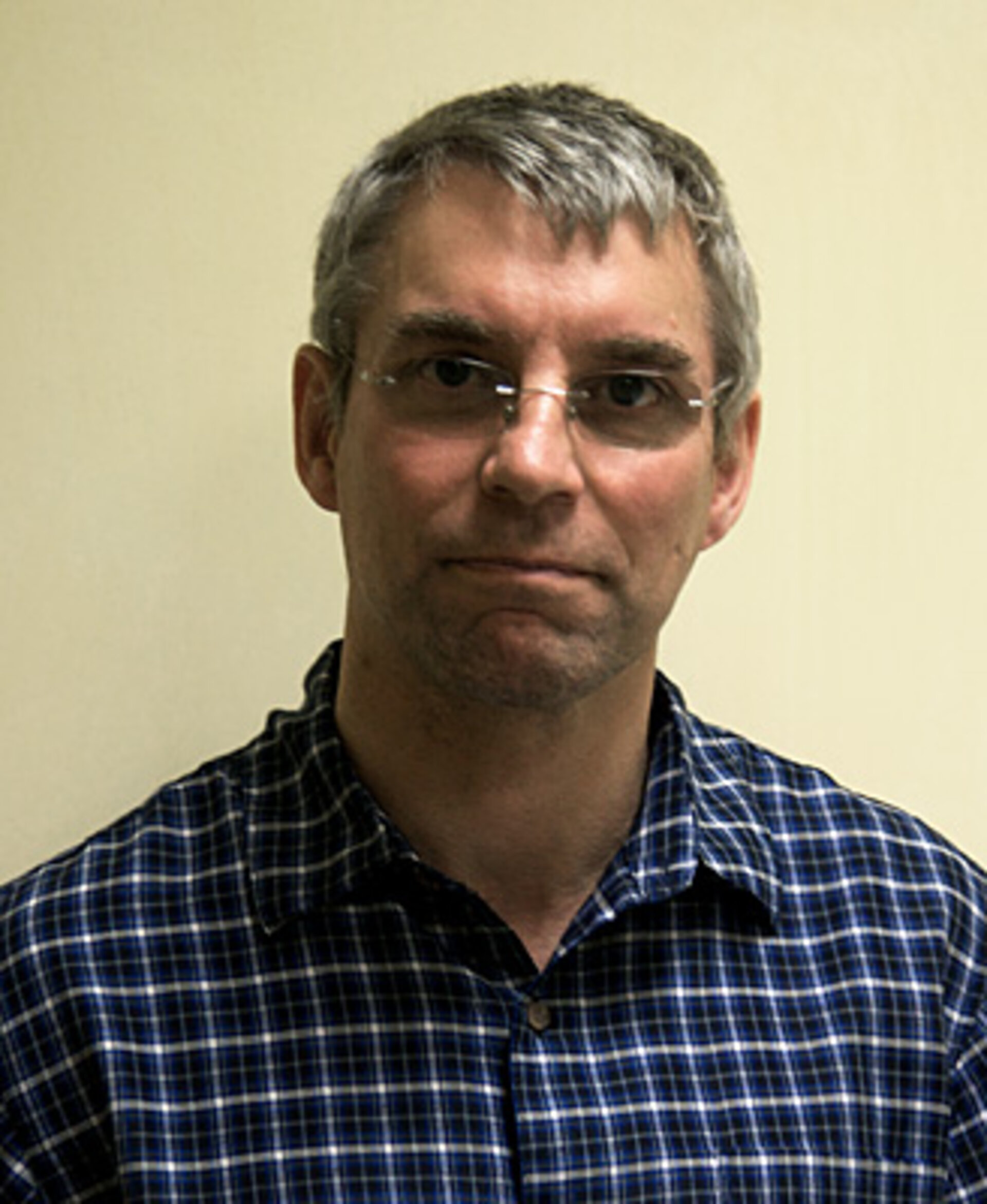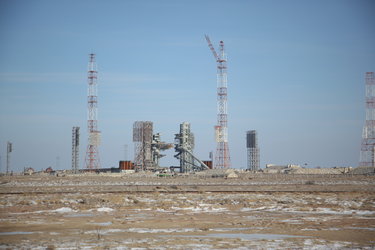CryoSat-2 Launch Campaign Manager: interview with Bill Simpson
Bill Simpson is in Kazakhstan overseeing final preparations for the launch of ESA's ice mission. Bill provides some insight into what this entails and talks about the different roles he has had within the CryoSat project.

Bill Simpson, a British national, started working at ESA's European Technology Centre (ESTEC) in the Netherlands in 2002 to support the System Manager for the original CryoSat. After the decision was taken to rebuild CryoSat, Bill assumed responsibility for the satellite testing activities, or 'Assembly, Integration and Verification' (AIV), which extends to managing the launch campaign.
Before joining ESA, Bill worked for many years at Astrium in the UK, both as a System Engineer and an AIV Engineer. In his last role, he was as one of the AIV Managers for Envisat. No stranger to launches, he has been part of the industrial teams for the launch of the Olympus communications satellites and Envisat for the Agency.
Bill graduated in 1983 from Birmingham Polytechnic, UK, in Electrical and Electronic Engineering
ESA: Can you explain what a launch campaign involves?
Bill Simpson
If you ask most people who read articles and see pictures of launch campaigns, the general conception is that a campaign is almost like being on holiday somewhere exotic. Unfortunately, there is a bit more to it than that.
Although a launch campaign is normally thought of as the period at the launch site, it actually starts long before with technical meetings and site visits to determine the suitability of a certain launch vehicle and site.
Once chosen, the satellite must be tested to show compatibility with the launcher. The interfaces to the launcher, processing facility and operations centre also need to be defined and tested. Finally, the logistics, such as team size, shipping arrangements and accommodation have to be in place before the campaign starts.
Once all the preliminary tasks have been completed and the Flight Acceptance Review has given permission to start the campaign, the satellite and team travel to the launch site. The sequence of events from then on is usually fairly standard; unpack and set up, inspect and test the satellite to ensure that no damage has been incurred during shipment.
Up to this point, the satellite team perform their own tests and, in parallel, the launch vehicle team carry out their duties. From here on, the team enters a phase called 'combined operations' where the satellite and launch vehicle teams work together for the satellite fuelling, encapsulation, transport to the launch vehicle and final testing.
Even after the launch itself, the campaign is not over; although as much as possible is packed before the launch, there is still the final packing and shipments to be done before the team goes home.
ESA: Is there a daily routine?
Bill Simpson
This varies a lot from launch to launch. Here at Baikonur, the hotel and processing facility are about 60 km apart, including several security points. This all means there has to be a daily routine because people are not free to travel as they wish.
A normal day starts with the bus leaving the hotel at 08:00 and arriving at the facility about 08:45. There is then an internal meeting followed by a 09:30 meeting with the Russian team. Lunch is at the facility, transported with the team from the hotel. After the day's testing activities, there is a progress meeting and we take the bus back to the hotel at 18:00.
ESA: What are the biggest challenges you face preparing to launch a satellite?
Bill Simpson
Under normal circumstances the biggest challenge is before you even get to the launch site. Everything has to be in place beforehand – you only have to forget something simple to cause major problems during the campaign.
That being said, no campaign is ever perfect. So the challenge is to minimise the effect of whatever problem you encounter. This is not always simple when working in an ex-military base several thousand kilometres from your suppliers.
ESA: You spend at least six weeks at the launch site; what are the living and working conditions like?
Bill Simpson
Again this is very different depending on the launch site and the time of year. During our stay, so far, in Baikonur we have experienced snow with temperatures down to –25°C and up to the current 5°C. The hotel is comfortable and more than adequate to cope with these extremes, apparently even when it can be 40°C in the summer!
Although Baikonur is a walled Russian enclave within Kazakhstan, it is large enough to have a sports area, shops, restaurants and a market, not to mention several night clubs. This allows the team to have some freedom and not have to be together all the time. Having said that, we are very lucky to have a team that gets on so well together, so long periods have not been a problem. Nevertheless, I think the hardest part for all the team members is being away from their families for such an extended period.
ESA: How has your role evolved working on CryoSat?
Bill Simpson
When I originally joined the CryoSat Project it was as a contractor to support the System Manager, Richard Francis. This fairly quickly evolved into supporting him as well as the Project and the AIV Managers. For me, this was a great opportunity as I thrive on being involved in all aspects of a programme. It allowed me to have a key role in the satellite procurement activities, system testing and in the launch campaign.
With the unfortunate launch failure of the first satellite plus the departure of some team members, there was an opening for an AIV and Launch Campaign Manager. Since a contractor cannot hold this position, it gave me the opportunity to join the Agency and also continue working with Richard, who had since become the new Project Manager. This increased responsibility has allowed me to be more involved with the running of the Project and finally managing the launch campaign.
ESA: What have been the most rewarding aspects of being involved with CryoSat?
Bill Simpson
I have always liked being part of a core project team rather than in a supporting role. This way, you become part of a close-knit team. For me, this is one of the most rewarding aspects – being part of a team, working well together and achieving the project's goals. CryoSat has definitely had this; we made a good team during the first satellite and passed it on to the second.
I think another aspect of the CryoSat mission, is the public awareness it has. Many people appear to know about it and are very positive as to the scientific goals it has set out to achieve. It will definitely be rewarding when it is up and delivering useful scientific data.
Finally, CryoSat, being an Earth Explorer mission, means that it is developed cheaper, faster and run by a relatively small team compared to other missions. This gives me a great feeling of achievement to be where we are today.
Editor's note:
This is one in a series of interviews with a few of the key people that are involved in the CryoSat mission. Please check back as the list will be added to over the coming weeks.






